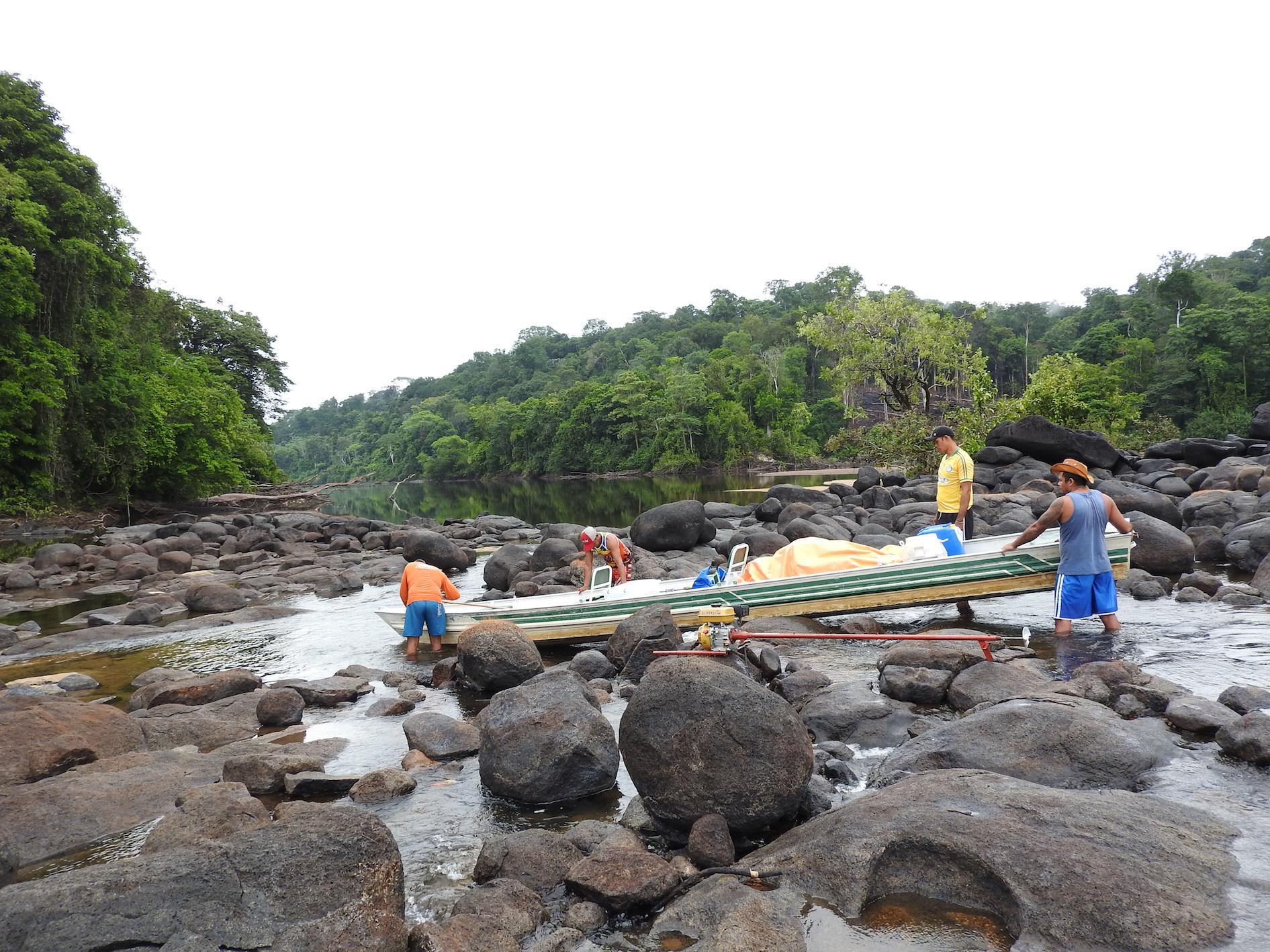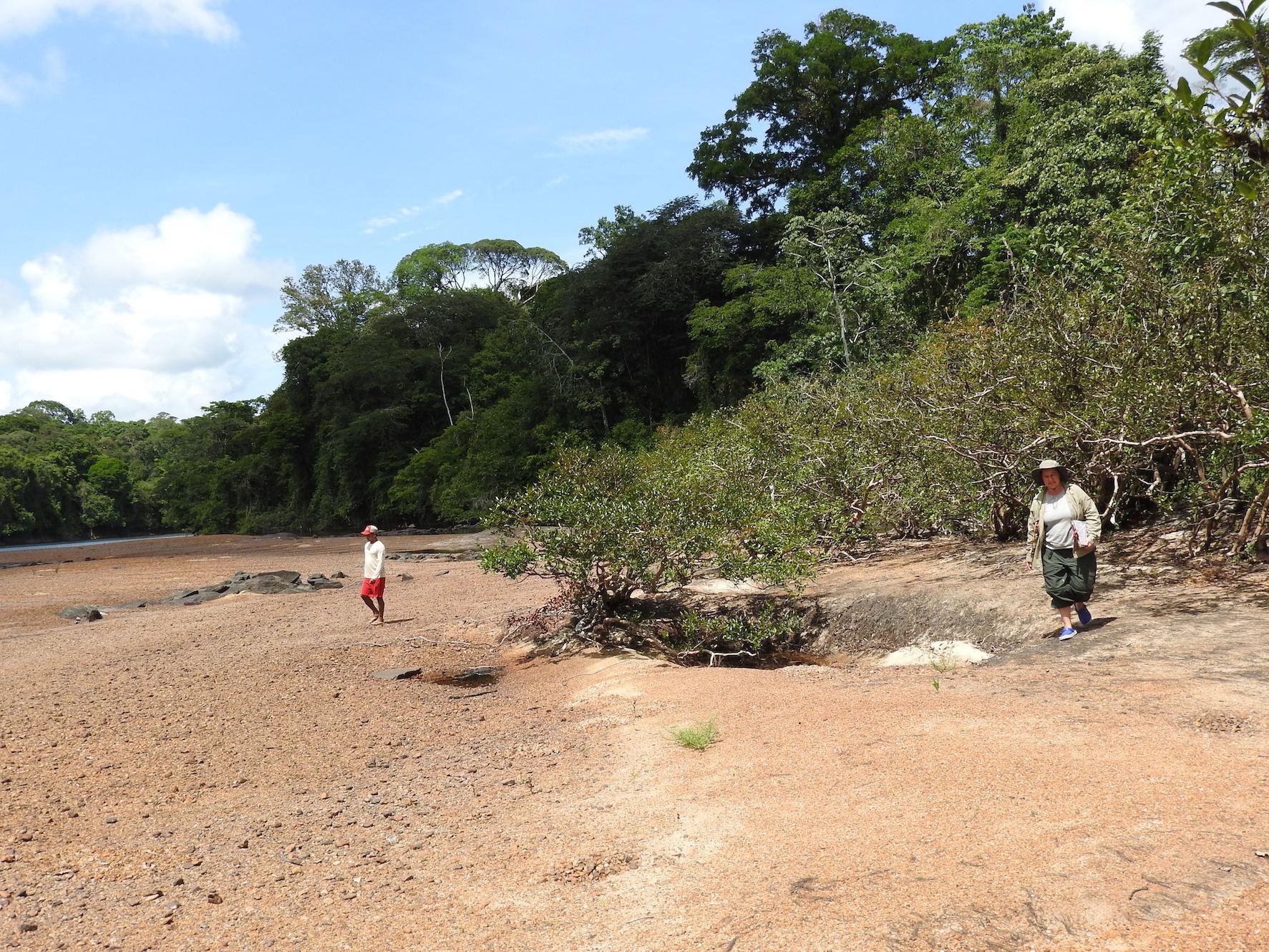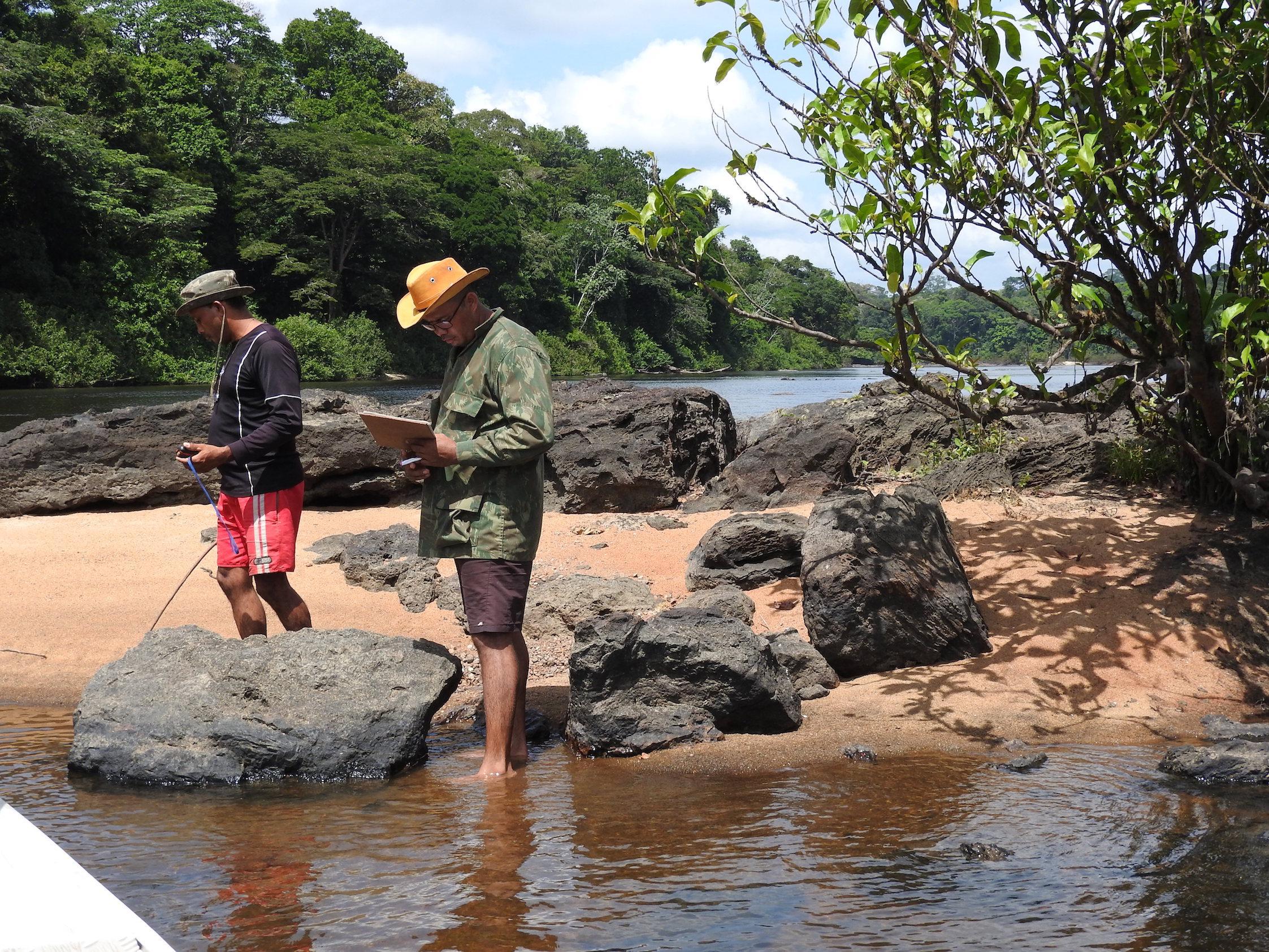Languages
Beyond harm’s reach? Submersion of river turtle nesting areas and implications for restoration actions after Amazon hydropower development.
Tim Vincent 25.Jan.2017
This editorial presents a summary of and background to:
Norris et al. (2018), Beyond harm’s reach? Submersion of river turtle nesting areas and implications for restoration actions after Amazon hydropower development. PeerJ 6:e4228; DOI 10.7717/peerj.4228
Background.
Power generation technology to take advantage of the potential energy released by falling water has been in continuous development for more than 2000 years, but it wasn't until the end of the 1800's (after the first electric generator was invented by Michael Faraday) that electric power generation started to take over from mechanical power.
Today, about 16% of global electricity generation comes from hydroelectric power with the largest, the Three Gorges Dam in China, generating 22,500 MW.
Hydroelectric energy is considered to be: renewable, "green", reliable, flexible and safe, but today, the major disadvantages; the environmental consequences and expense related to these projects are coming under increasingly close scrutiny.
Brazil has enormous potential for generating hydroelectric power and in 2016 generated 410.24 TWh from an installed capacity of 98,015 MW. (https://www.hydropower.org/country-profiles/brazil). However projects such as Belo Monte Hydroelectric Power Plant on the Xingu River have generated much controversy regarding environmental and energy issues, as well as the fact that the dams and buildings directly affect the lives of indigenous groups and riverine populations.
Historically, dams were built with large reservoirs near populated areas, not only to provide electricity but also to have a reserve of water for irrigation and consumption during times of drought and to generally regulate the supply of water during fluctuations in the natural supply. Now, all the large dam building projects are of the run of river type. A construction which does not have a large reservoir so that impact on the environment is reduced.
Note that the reduction in the building of dams has reduced their overall contribution to demand from around 90% to 75%. Thus conventional "dirty" thermal plants burning non-renewable carbon based fuels have taken up the slack. The contribution from from nuclear, wind, bio and solar sources is still very small.
The Cachoeira Caldeirão Dam in this study is a run-of-river dam located on the Araguari River in Amapa state, Brazil.
Protecting turtle nests protects biodiversity (jaguar resting on one of the community management beaches).
Photo credit Fernanda Michalski.

Searching for sustainable development. Photo credit: Fernanda Michalski
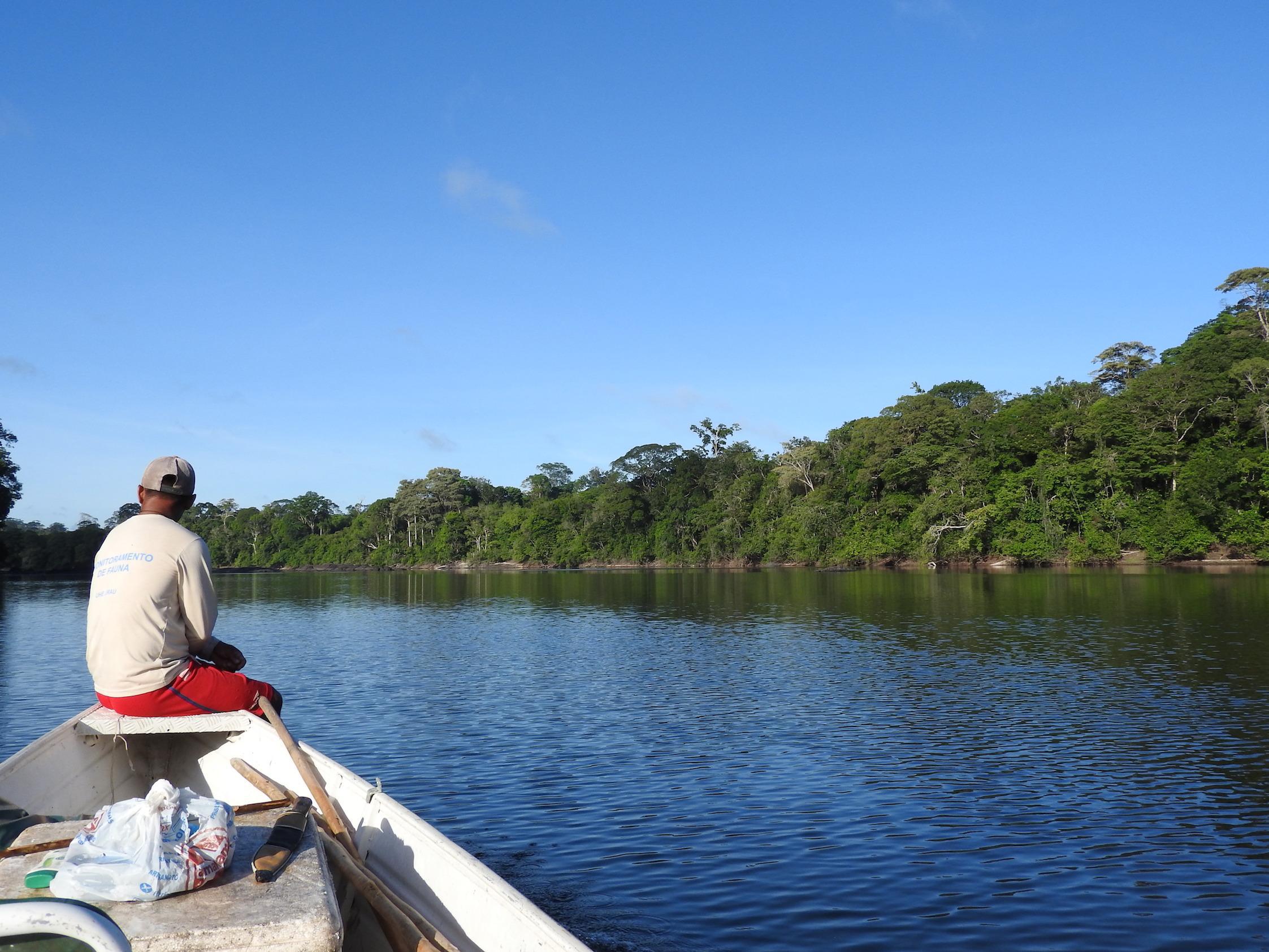
Community care. Photo credit: Fernanda Michalski
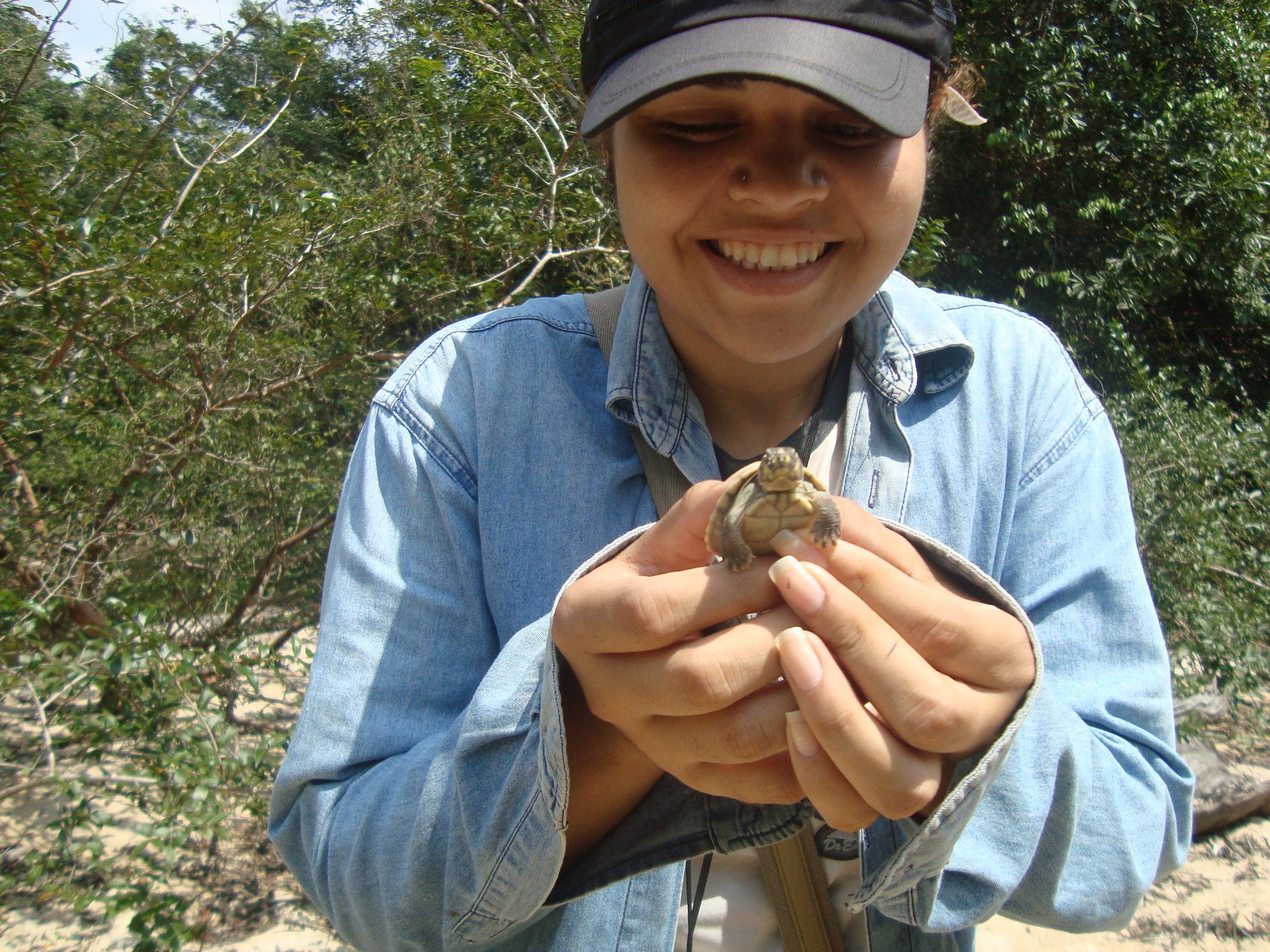
First community managed river turtle nesting beaches. Photo credit James Gibbs.
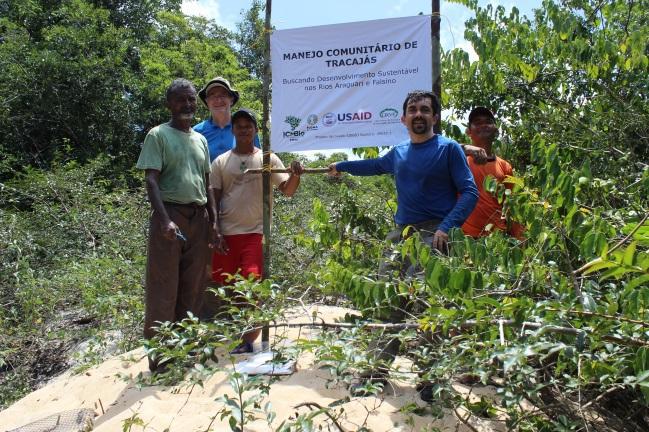
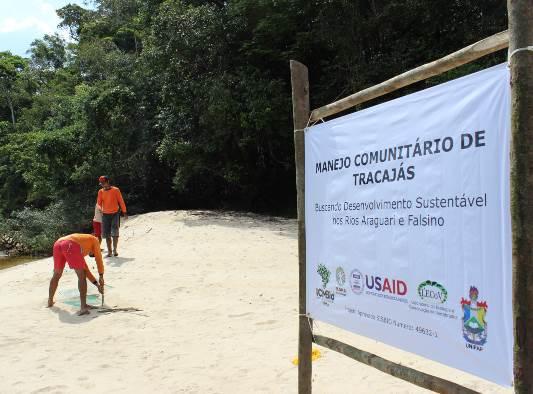
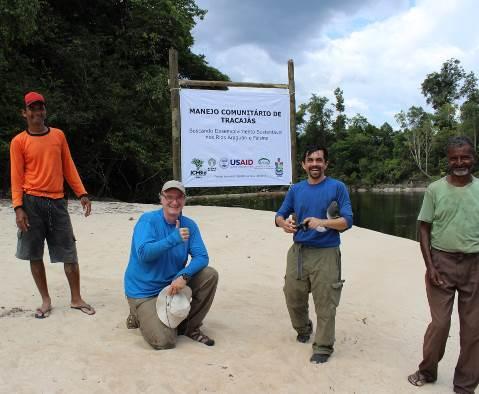
Team installing predator exclusion devices to protect yellow spotted river turtle nests.
Photo credit: James Gibbs.

Predator exclusion devices used to protect yellow spotted river turtle nests. Photo credit: James Gibbs.
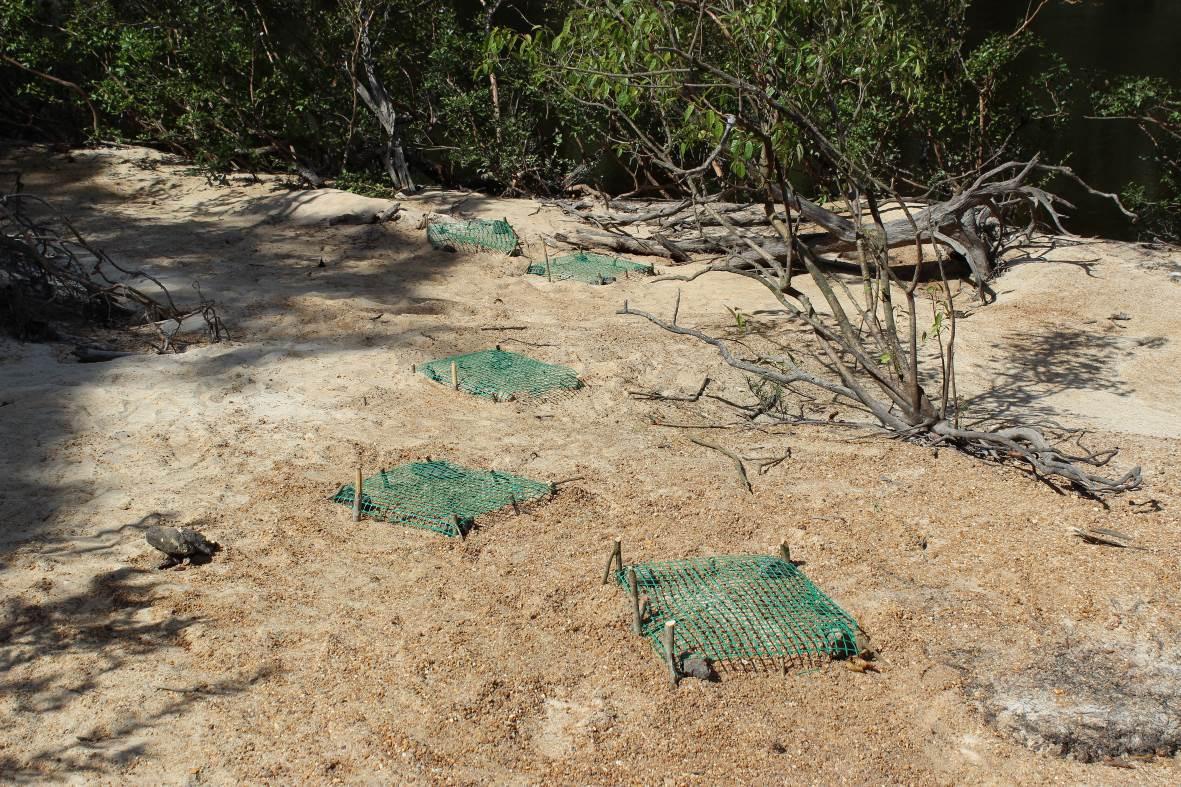
Turtle hatchlings . Photo credits Fernanda Michalski.
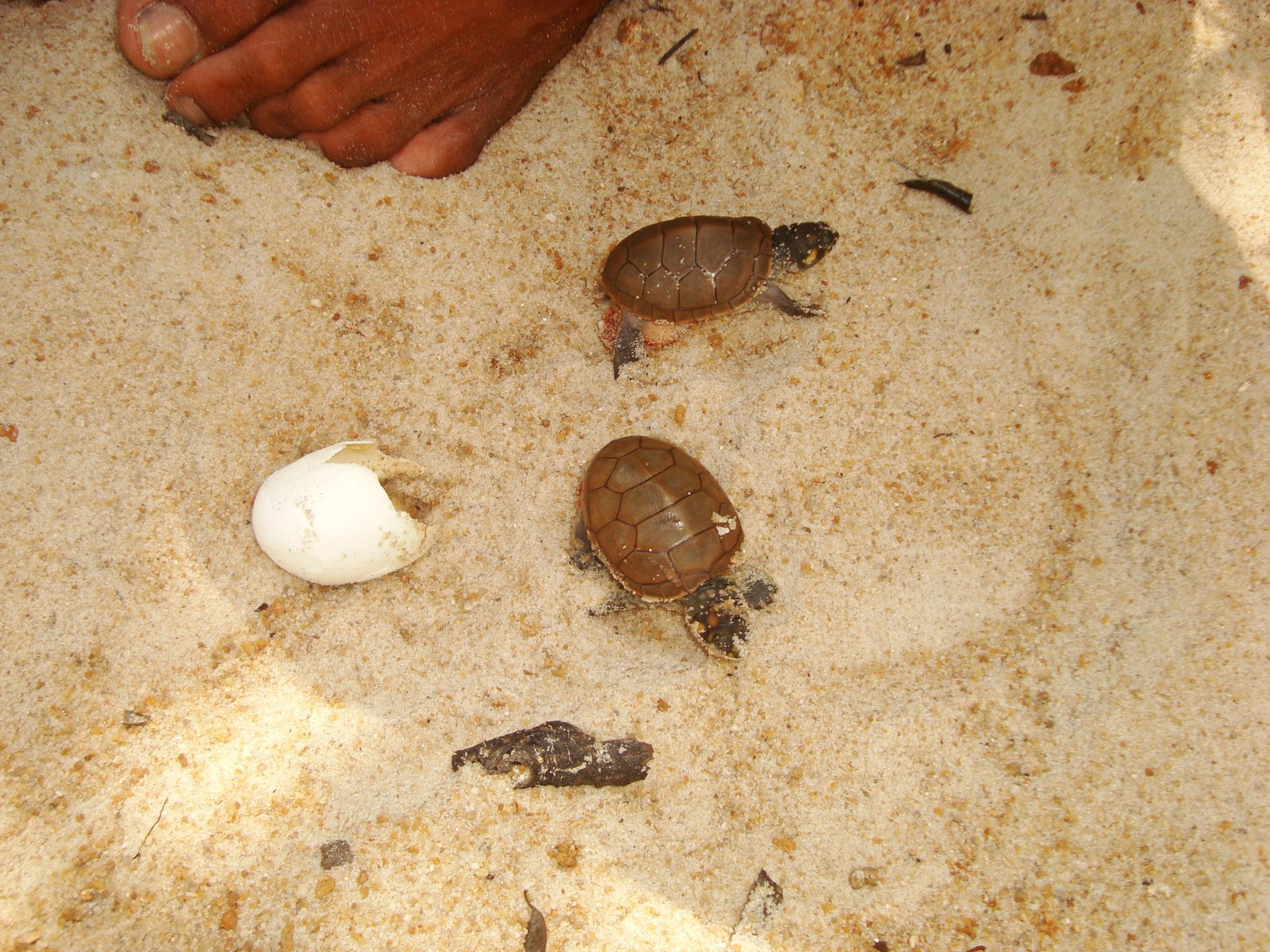
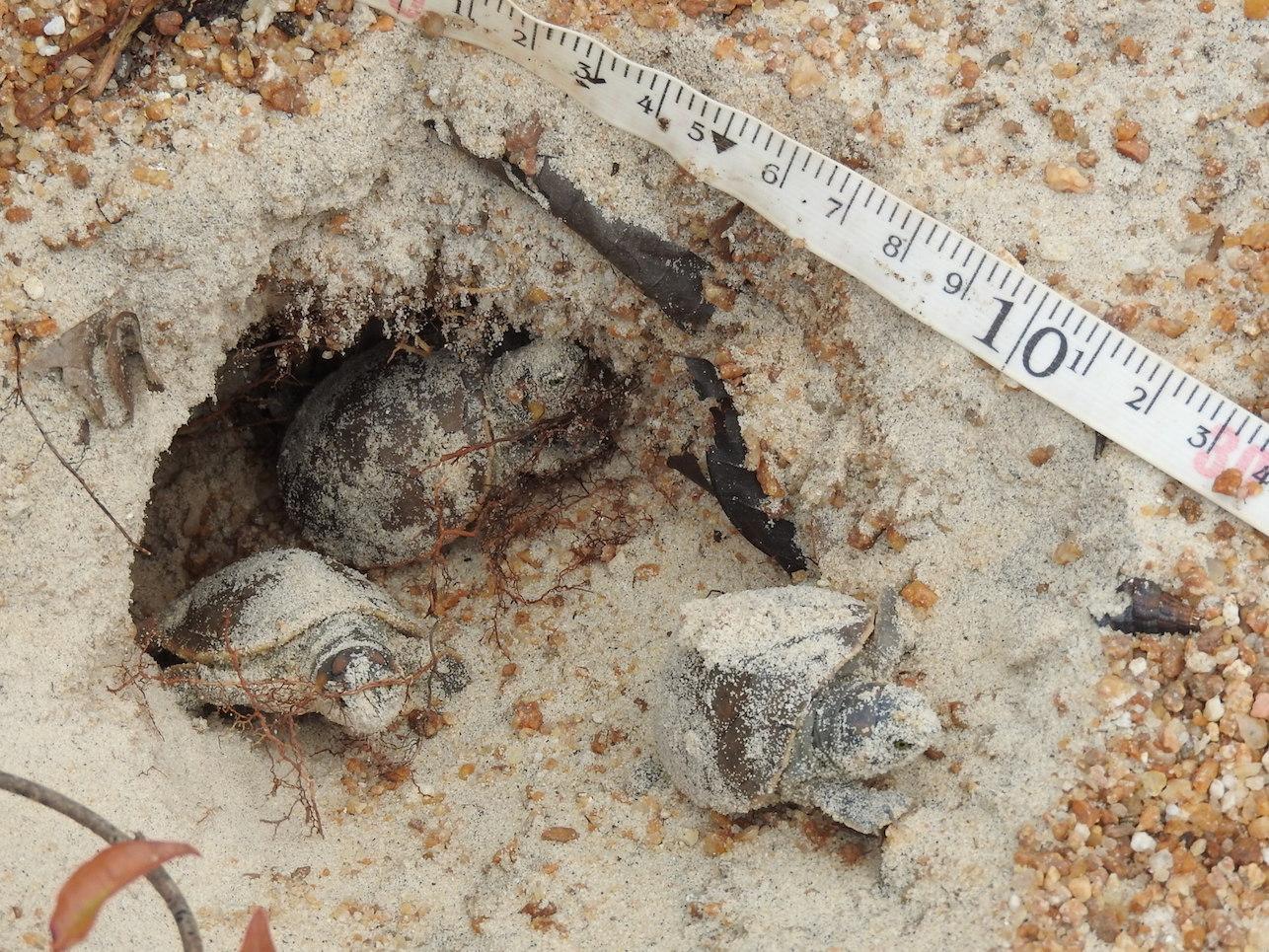
Turtle nesting surveys. Photo credits: Fernanda Michalski
